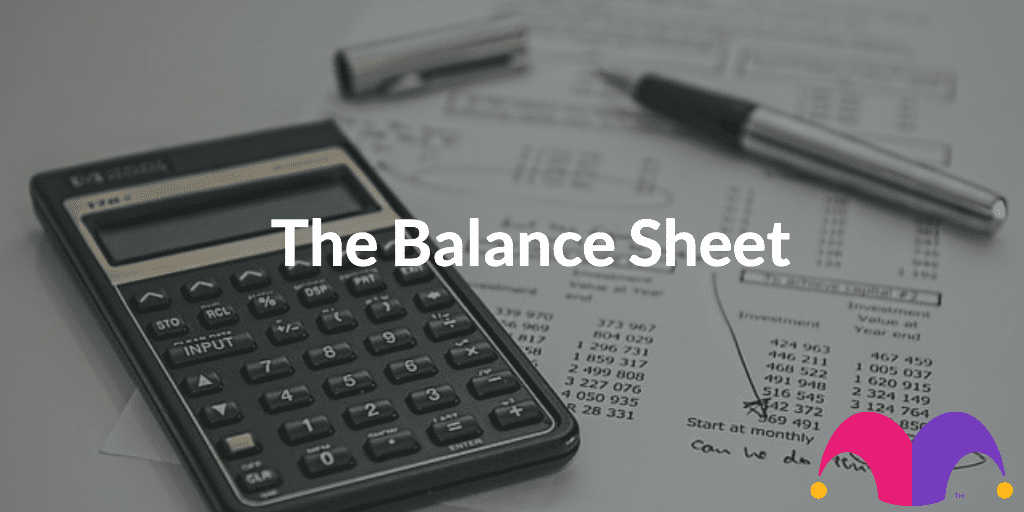If you’re running a company, or if you’re a shareholder in one, it’s really useful to be able to tot up the total value of all the company’s stuff to help get a handle on its valuation. But with anything more than the simplest companies, that is not a trivial exercise.
Companies have money invested in machinery, vehicles, computers, and all sorts of assets needed for the everyday running of the business. Many will also have an inventory of finished goods, and stocks of parts and raw materials. At any one time, some of the bought-in parts and materials won’t be paid for yet, and the company won’t yet have been paid for some of the stuff it’s sold. Then there’ll often be money owed to banks and other creditors, some for long-term borrowings, some shorter term, etc.
Taking stock
And that’s where the balance sheet comes in. At a given moment (up to four times a year for publicly quoted companies), all of the above is added up to provide us with a snapshot. The balance sheet will show three classes if items — assets, liabilities, and the net worth of the company attributable to shareholders. By accounting convention (and as an inevitable outcome of standard double-entry accounting), the net worth of the company (in accounting terms) equals its total assets minus its total liabilities.
Let’s look at a typical breakdown of a fairly simple balance sheet.
Fixed assets
Firstly, we’ll see assets divided into two sections, with fixed (or non-current) assets coming first. These are the assets needed for the long-term running of the business, which can’t (and wouldn’t sensibly be) readily converted to cash. Fixed assets include plant and machinery — buildings, vehicles, tools, etc. Basically, any long-term tangible stuff (which really just means things you can walk up to and kick) is included.
After that, we have intangible assets, which can cover a number of things. Intellectual property like patents and copyrights are counted as intangible assets, as they are things that are used for the long-term operation of the business. Also, knowledge gained through spending money on R&D can be included. Goodwill is usually shown separately, and arises when a company acquires another business at a price greater than the net value of its assets. (If you think this stuff is hard to put a figure on, you’d be right — intangible assets can be a real bane when trying to value a company, and can sometimes disappear without even a puff of smoke).
Part ownership of subsidiaries and joint ventures are also counted as fixed assets.
Current assets
Next up we’ll see current assets, which includes cash and all those things that are expected to be converted to ready cash within the next year — things like stocks of finished goods waiting to be sold, parts and materials waiting to be made up and sold, and money receivable for goods already sold but not yet paid for.
Current liabilities
Similar to current assets, current liabilities are all those things the company owes which are expected to fall due within the next year. That’s money owed to trade creditors (for raw materials bought in but not yet paid for, for example), debt payments and tax due during the next year, and so on. Provisions, which cover money set aside for probable future liabilities if they have become known during the current period, can muddy the water here a bit, but that’s beyond our scope here.
Non-current liabilities
Finally, to round off the asset and liability picture, we come to non-current liabilities. These include such things as long term debt (which is the most common long term liability), pensions — all the stuff the company owes, but which will not come due in the next year.
Equity
The total assets minus total liabilities will give us a net asset figure, and this is equal to the total of the final section of the balance sheet, the shareholders’ equity. Shareholders’ equity is, in effect, a liability, in that the company “owes” it to its owners. If the company was wound up and all the assets and liabilities finalized, that’s how much they shareholders would get (assuming the “book value” value of everything listed is accurate, which in real life it rarely is).
So what we’ll see in this section is a reconciliation of all the shares in issue, lists of difference classes of shares, and various reserves. Also, we’ll see here a count of the company’s total retained earnings, which is net income that has been retained rather than distributed to shareholders as dividends (and this will also include retained losses, from years when the company made a loss).
Looking for more investment ideas?
Identifying the best investment opportunities requires long hours of in-depth research. But having a true ‘edge’ can make all the difference to your portfolio’s returns, especially during a bear market like this one.
That’s why, when it comes to helping to select their next investment, thousands of UK investors turn to Motley Fool Share Advisor. Led by a world-class team of expert investors, The Motley Fool UK’s flagship share-tipping newsletter alerts its members to 2 high-potential, high-conviction UK and US stock recommendations each and every month.
These are the sort of investment opportunities that could help contribute to life-changing scenarios. And right now, you can access ALL of them for just pennies a day.
So if you’re eager to start aiming for better investment returns, then don’t wait another minute… Start your Motley Fool Share Advisor membership — backed by our iron clad 30-Day Subscription Refund Guarantee — TODAY.
[Static_FreeReport]
